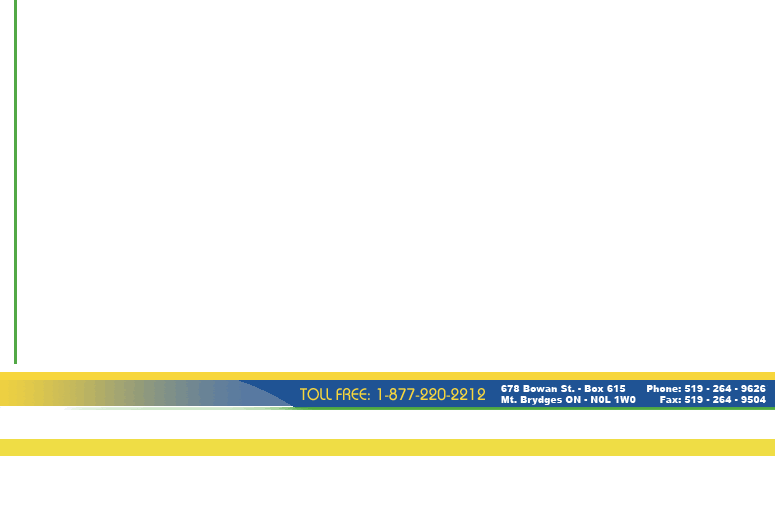Maximum
Swine
Marketing Ltd. Newsletter
Hog Commentary for
November 22nd, 2005
Hog
Markets
Cash hog bids were sharply lower in regional markets but downside
was lagged in the national averages. Lower bids were attributed
to seasonal trends as cash tends to decline considerably entering
the Thanksgiving shortened week in the US. In addition to the
seasonal weakness, a large plant in Iowa was shut down on Wed
to Fri due to an accident that saw one employee killed. This
plant is expected to be running at capacity again by Wed Nov
23, just before the holiday. Live weights have again been reported
at record levels, reaching 270.7lbs, 3.7 heavier than last year.
Cutout was higher from the previous week by U$1.56/cwt. This
increase and strength in cutout during a period of time that
normally produces lower product values gives a good indication
that demand is strong for pork products. Slaughter remains slightly
above 2004 but not to the degree that it has been for the past
3 to 4 weeks.
Lean
hog futures were lower this week after a sharp decrease during
Monday’s trade. The nearby Dec reacted to sharply lower
cash trading limit down during the session and ended the week
U$ 2.70 lower. All 2006 contracts ended slightly lower but long
term fundamentals remain positive. Trading for the past 5 days
has been very volatile due to the lack of market direction.
Cash has been experiencing seasonal declines causing weakness
but product values have remained strong, which has put value
into the market. This combined with a number of other factors
has caused lean hog futures to trade in huge ranges from one
day to the next.
Feed Markets
Nearby and future soymeal contracts traded sharply lower over
the past week with losses on Wednesday and Friday totaling $10.00
US per short ton. The sell off was attributed to demand concerns
following an unofficial news release from China reporting over
300 deaths linked to the spread of bird flu with evidence of
human to human infection. Although the release was never confirmed
soymeal futures were unable to recover on fears of more bird
flu in the world and weakening demand for poultry. Production
numbers from the latest USDA report also provided little support
with ending stocks now forecast well above the previous year
which had a final yearly average of $180.90 US per short ton
versus current forward prices of $177.50.
Corn futures continued to trade in the well-defined down-trend
dropping once again to contracts lows during several sessions
in the past week. Futures were able to trade through the low
of 2004 which registered at $1.91 US per bushel generating technical
weakness. Cash prices in the central Midwest were mixed with
slow producer selling providing some strength to cash bids but
the overall weakness in the feed grain market limiting any major
upside to price. Although little upside is expected through
the remainder of 2005, the US corn market may need more than
just current fundamentals to force another move lower in the
futures.

